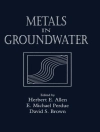In this comprehensive two-volume resource on the topic senior lead generation medicinal chemists present a coherent view of the current methods and strategies in industrial and academic lead generation. This is the first book to combine both standard and innovative approaches in comparable breadth and depth, including several recent successful lead generation case studies published here for the first time.
Beginning with a general discussion of the underlying principles and strategies, individual lead generation approaches are described in detail, highlighting their strengths and weaknesses, along with all relevant bordering disciplines like e.g. target identification and validation, predictive methods, molecular recognition or lead quality matrices. Novel lead generation approaches for challenging targets like DNA-encoded library screening or chemical biology approaches are treated here side by side with established methods as high throughput and affinity screening, knowledge- or fragment-based lead generation, and collaborative approaches. Within the entire book, a very strong focus is given to highlight the application of the presented methods, so that the reader will be able to learn from real life examples. The final part of the book presents several lead generation case studies taken from different therapeutic fields, including diabetes, cardiovascular and respiratory diseases, neuroscience, infection and tropical diseases.
The result is a prime knowledge resource for medicinal chemists and for every scientist involved in lead generation.
Inhoudsopgave
VOLUME 1
PART I: INTRODUCTION
#01 Introduction – Learnings from the Past – Characteristics of Successful Leads
#02 Modern Lead Generation Strategies
PART II: THE IMPORTANCE OF TARGET IDENTIFICATION FOR GENERATING SUCCESSFUL LEADS
#03 `Ligandability’ of drug targets: assessment of chemical tractability via experimental and in silico approaches
#04 Chemistry-Driven Target Identification
PART III: HIT GENERATION METHODS
#05 Lead Generation based on Compound Collection Screening
#06 Fragment-based Lead Generation
#07 Rational Hit Generation
#08 Competitive Intelligence-based Lead Generation and Fast Follower Approaches
#09 Selective Optimization of Side Activities (SOSA): An Alternative and Promising Strategy for Lead Generation
#10 Lead Generation for Challenging Targets
#11 Collaborative Approaches to Lead Generation
VOLUME 2
PART IV: CONVERTING HITS TO SUCCESSFUL LEADS
#12 A Medicinal Chemistry Perspective on the Hit-to-Lead Phase in the Current Era of Drug Discovery
#13 Molecular Recognition and its Importance for Fragment-Based-Lead-Generation and Hit-to-Lead
#14 Affinity-based Screening Methodologies and their Application in the Hit to Lead Phase
#15 Predictive Methods in Lead Generation
#16 Lead Quality
PART V: HYPOTHESIS-DRIVEN LEAD OPTIMIZATION
#17 The Strategies and Politics of Successful Design, Make, Test, Analyze (DMTA) Cycles in Lead Generation
PART VI: RECENT LEAD GENERATION SUCCESS STORIES
#18 Lead Generation paved the way for the discovery of a novel H3 Inverse Agonist Clinical Candidate
#19 Vorapaxar – From Lead Identification to FDA Approval
#20 Lead generation approaches delivering inhaled ß2-adrenoreceptor agonist drug candidates.
#21 GPR81 Case Study
#22 Development of Influenza Virus Sialidase Inhibitors
#23 The Discovery of Cathepsin A inhibitors. A project adapted fragment approach based on HTS results
#24 Lead Structure Discovery for Neglected Diseases – Product Development Partnerships driving Drug Discovery
#25 A Fragmentation-Enumeration Approach to Generating Novel Drug Leads
Over de auteur
Joerg Holenz is a trained organic and medicinal chemist and acquired his Ph D in Germany on the synthesis of alkaloids as antimalarial agents. After leading the preclinical activities of the marketed analgesic Tapentadol (Grünenthal Pharmaceuticals Gmb H), he headed the medicinal chemistry department of Barcelona-based Laboratorios Esteve. He then moved to Astra Zeneca’s CNS/ pain research unit in Sweden to head lead generation chemistry. In 2012, Joerg was selected to join AZ’s newly formed ‘virtual’ neuroscience unit in Boston as director of discovery and preclinical sciences. As a project leader he is responsible for pioneering a novel concept of driving research and development projects via increased use of academic and industry collaborative networks. In his career, Joerg worked predominantly with peripheral and central targets in the pain and neuroscience disease areas. He has edited, authored or contributed to more than 45 publications, 50 patent applications and several books and book chapters.












